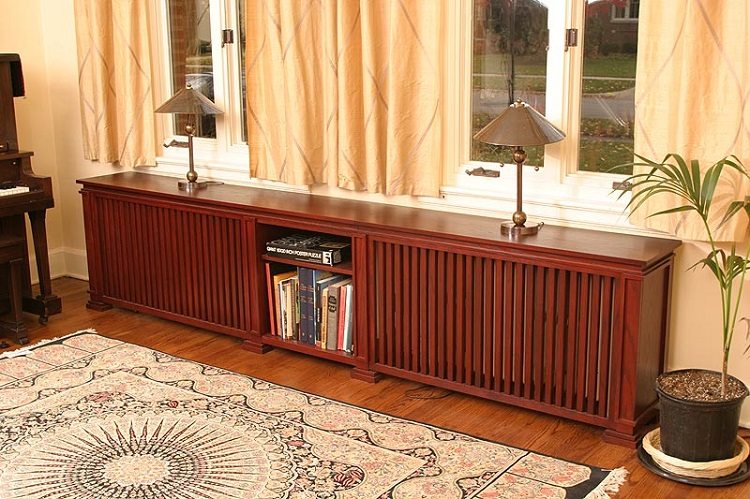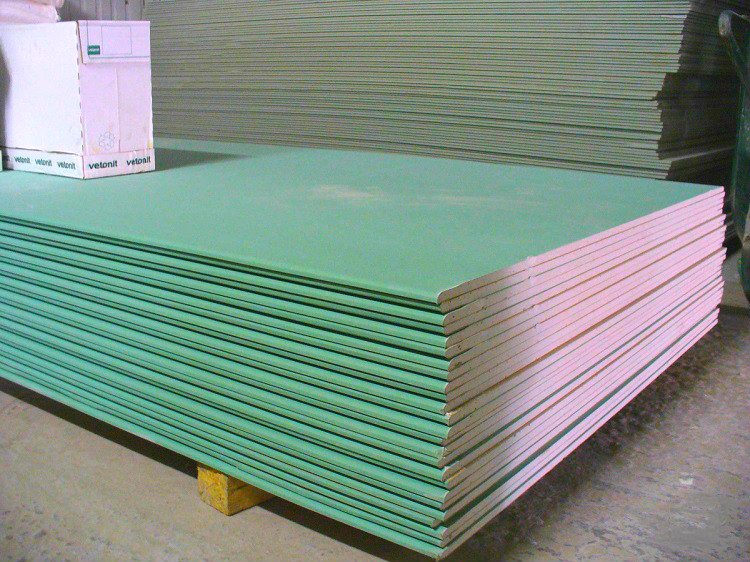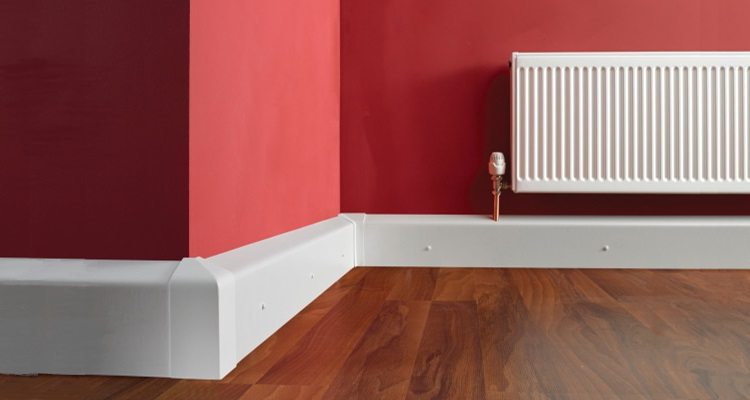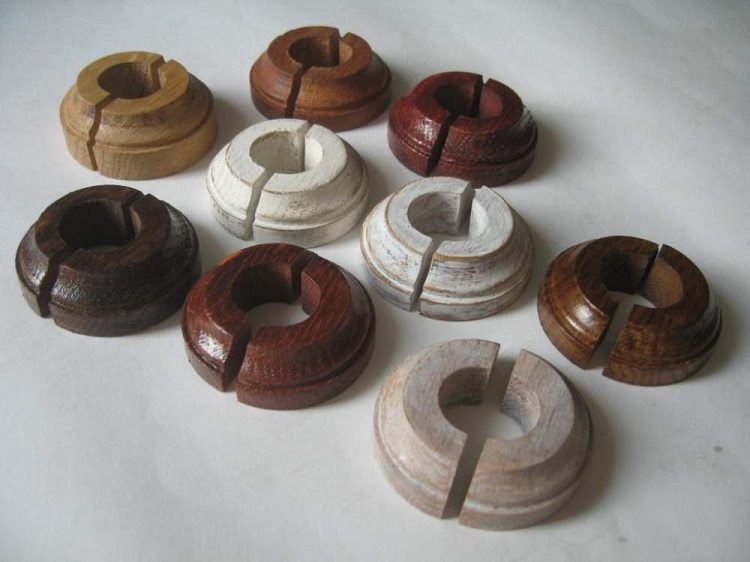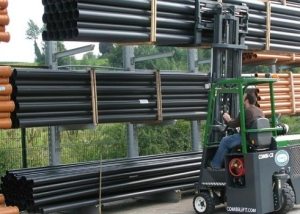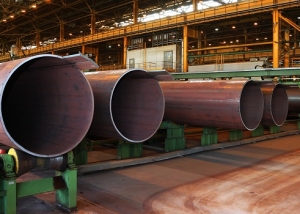Our contemporaries cannot be surprised by the presence of various pipes in the living room. Their network often interferes with the implementation of design projects aimed at creating coziness, beauty and lightness in separate rooms. However, in order to improve the interior of the room, the pipes can be hidden in the original design. Of course, to make a decorative box for heating pipes you will have to spend time and money, but the result can exceed even the wildest expectations.
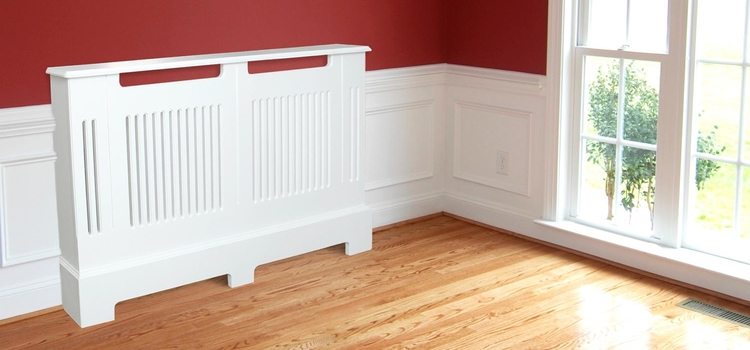
Using a decorative box, you can not only hide all heating communications, but also add a stylish touch to the interior
Content
Pipe Concealment Options
There are other ways to hide from the eyes of the inhabitants of the housing and their guests this type of utilities.
Wall all heating circuits passing through the apartment into the walls. It would seem that everything is very simple: it is enough to make the strobes, lay the pipes in them, and then seal them with mortar and plaster. But before proceeding with the work, it is necessary to exclude even the most insignificant communication errors and provide for possible scenarios. This is especially true for plastic pipes that are connected by fittings. And steel, if the welding technology is not followed, can also leak.
Disguise communications furniture. In the kitchen, this is what usually happens. But in rooms with a minimum of furniture (such as, for example, an open studio), it is almost impossible to do this.
In view of the above, decorative boxes for heating pipes are the most reliable way to hide such elements of engineering communications. The right approach will not only allow masking the heating system, but also add interesting accents to the interior design.
Today, boxes are mainly made of the following materials:
- plastic lining. It is fixed on a metal or wooden frame;
- brickwork. To implement this method of masking unsightly pipes is not always possible, since it is characterized by great complexity;
- drywall. To date, decorative boxes made of this material are most widespread;
- ready-made plastic boxes. They are simply placed around the pipes and fixed to the wall on a metal profile frame.
Drywall box
Hide all heating pipes The easiest way is in constructions of gyro. Simplicity of manufacture and relatively low cost - this is what determines the high demand for this material.
Helpful information! Giprok is nothing more than the gypsum board familiar to us. He received this name “thanks” to the Russification of the English name of his most popular brand - Gyproc.
For the manufacture of drywall boxes you will need:
- wooden bars or metal profile;
- drywall itself. If you are going to decorate pipes in the bathroom, it is better to get moisture-proof, while for all other rooms, the standard one will do;
- fasteners - self-tapping screws and dowels;
- materials for putty, as well as finishing;
- accessories to cover the joints of the structure with the floor and walls.In this case, we are talking about decorative outlets for heating pipes, covers, plugs, rings.
Installation of drywall box includes the following steps:
- first you need to determine its size. In this case, it is necessary to exclude the touch of heating pipes with the walls and frame elements;
- we cut the wooden bars or profile slats in accordance with the selected dimensions;
- we fix the start profile on the floor. Then, on this basis, the frame is assembled. To connect the elements, it is enough to use self-tapping screws and tighten them with a screwdriver;
- we cut the necessary fragments from the drywall plate, taking into account the dimensions of the frame. Having processed the edges with a planer for giproka, we apply them to the crate. Fixation is made with screws;
- to protect the edges of the slab from damage to the corners of the structure, it is necessary to stick a special plate made of perforated metal;
- the joints between the plates and the places of entry into the material of the screws are treated with putty
- primer box and proceed to the finish.
The final step in creating a decorative design is to install a skirting board at the junction of the box with the wall and floor.
Plastic box
In places with a large presence of people (for example, in offices), as well as in bathrooms and corridors, pipes can be hidden in boxes made of plastic panels. Installation is recommended in parallel with the sheathing of the entire room. So it will be possible to predict the rational consumption of material.
Installation is carried out in the following order:
- first, a crate is installed on the ceiling and walls. Most often, wooden bars with a cross section of the order of 40x40 millimeters are used for its manufacture.
- fasten the bars to the ceiling and walls with dowels equipped with a plastic sleeve. Then align them horizontally and vertically.
- in the place of passage of the heating main to the floor and walls, install additional support bars. The horizontal and vertical racks of the frame will be attached to them.
- Having finished covering the main planes of the ceiling and walls, panel the frame of the box.
Helpful advice! To make the adjoining angles look much more aesthetically pleasing, use special skirting boards in which there is a groove for plastic panels.
First, the side plane is sheathed by installing panels cut to the height of the box. When performing this operation, they should be in an upright position. It is allowed to fix plastic using special adhesives, a construction stapler or small nails.
It is possible to sheathe the upper plane both with long longitudinal panels and with short plastic segments, placing them across.
Completion of work involves fastening to the corners of special elements that will hide all trimmed edges.
The use of decorative linings for heating pipes
During major repairs, neat polypropylene or metal-plastic pipes are installed in place of old, outdated steel engineering communications. But, even with an attractive appearance, they are not always able to harmoniously fit into the interior of a modern residential building. And here, to make them less noticeable or, conversely, to give them the missing notes of sophistication and leave it in sight, you can use decorative lining on the heating pipes.
Currently, there are several varieties of products of this type on sale. However, many homework masters opt for so-called sockets. And there are reasons for this.
When laying the flooring, it is necessary to solve the problem of the gap that occurs where it adjoins the pipe. Such a gap does not seem to interfere, but it does not look the best way.
If a laminate is used as a floor covering, it is simply necessary to leave a gap of up to 10 mm. Thus, you will form a space whose volume will be sufficient to accommodate this material during its thermal expansion. Therefore, it is recommended to close the gap using a special device that can hide a cosmetic defect without prejudice to the functionality of the floor covering. At the same time, decorative rings for heating pipes, commonly referred to as sockets, will become the optimal and universal solution. This product is simply put on the pipe, after which it is inserted into the slot and clicks into place.
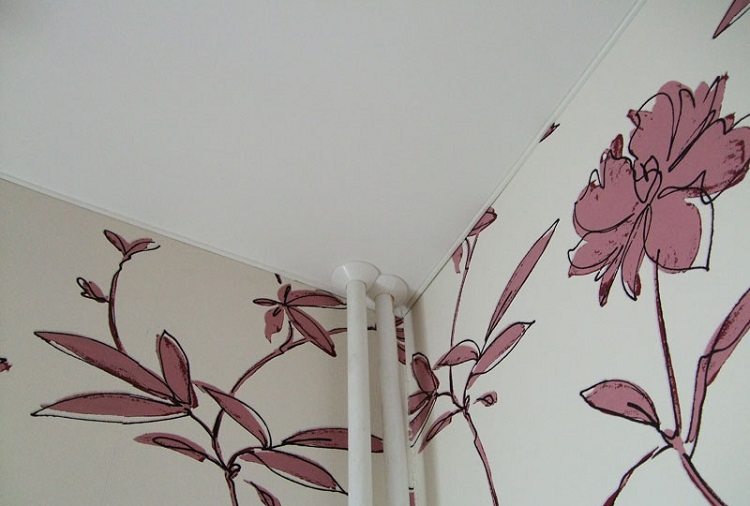
Decorative overlays need to be installed so that the entry point of communications into the ceiling looks aesthetically pleasing
The main advantages of decorative outlets for heating pipes include:
- aesthetic appeal;
- ease of installation;
- acceptable price;
- a wide variety of sizes;
- a variety of textures that mimic the surface of natural wood, and color options;
- universality. Sockets can be used with coatings of various kinds.
The relevance of using decorative plugs for heating pipes deserves no less attention. This is due to the peculiarities of the coolant transportation scheme for engineering communications, which directly determines the method of connecting radiators. Most of these products in modern design are designed for 4 options: one-way, diagonal, saddle and bottom connection. That is, at each of the corners of the batteries there is one hole, but not all 4 are involved, but only 2 - one for entering the coolant and the other for its output. Obviously, the remaining “unemployed” two of them must be closed. In this case, decorative plugs will come to the rescue. These products differ not only in color but also in shape. The metal plug can be the simplest spherical or even with a protruding part resembling an autumn oak leaf. But plugs made of polymeric materials can be called decor only with a big stretch. Such plugs are for the most part strictly functional.
By closing the heating pipes, you will ennoble your home and get a harmonious interior.
